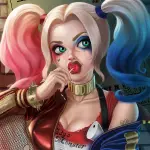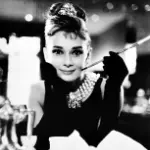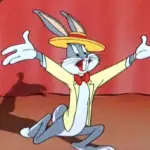We become bored with watching actors give us phony emotions. We're tired of pyrotechnics and special effects. While the world he inhabits is, in some respects, counterfeit, there's nothing fake about Turman himself. No scripts, no cue cards. It isn't always Shakespeare, but it's genuine. It's a life.
The designer and director of Seahaven Island, Christof, said meaningfully in the opening monologue of the film.
French philosopher Jean Baudrillard said that all our realities are actually simulacra. In the simulation, reality is reconstituted from the non-real, creating a more real hyperreality than reality itself. And this hyperreality "is produced from the command center of the matrix, the memory bank. With these, reality can be gradually produced." In the case of "The Truman Show," this theory can be interpreted from two dimensions.

Theme Analysis
First, regarding the character of Truman, the island of Seahaven, where he was born, grew up, and lived without ever leaving, is actually a hyperreal constructed through simulation. Truman lives in what appears to be a happy family, with his beautiful wife Meryl, his loving mother, and his close friend Marlon. The neighborhood is friendly and peaceful, and Truman has a leisurely job as a clerk.
The film doesn't deliberately show emotional turmoil, workplace politics, or the ups and downs of life. In this world, Truman is an ordinary person, living a plain and ordinary life, with his own simple joys and regrets. His whole life is lived within a vast "hyperreal" on Seahaven Island. Before meeting Sylvia, he never doubted this reality, and as long as he takes a step outside of Seahaven Island, he will discover how false this reality is. Why did he never think of leaving before?
In the second half of the film, Christof reveals the truth, and the plot of the father dying at sea is created to instill a psychological trauma in young Truman, who aspires to be an explorer like Magellan but fears the ocean. Is the ocean really terrifying? For Truman, who has gone through this event, terror becomes reality. Is Seahaven Island the real world? For Truman, who has been repeatedly told that it is "the greatest place on Earth" by countless people, Seahaven Island is the real world. Christof directs and creates Truman's memories, turning the unreal into hyperreal. Just as Baudrillard describes the current state of reality in modern society - all of our realities are actually simulations. The reality that emerges from simulation, he calls it "hyperreal," the most dangerous aspect of this "hyperreal" is that it is even more real than reality itself.

The second dimension is The Truman Show's audience, including the film's audience. Baudrillard used the example of theme parks to explain the process of hyperreality. The park is a fictional scene from a movie, and people's daily lives become monotonous, so they need to experience something magical in this manufactured illusion. We may think that being in a theme park is nothing special, but Baudrillard's further inference is shocking. He believes that our lives are largely constructed by film and media. The Truman Show is a perfect example. This popular TV show is broadcast 24/7, 7 days a week, and some viewers even watch it non-stop. One extreme example is the middle-aged man who spends all his time in the bathtub. For him, The Truman Show may constitute his entire real life.
Truman's world creates a huge illusion for its audience. It is almost perfect, with neighbors who are kind and peaceful, with no scheming or mischief; just as Christof says in the film, Seahaven is the way the world should be. Such a world is undoubtedly addictive. In fact, similar to The Truman Show, no matter what kind of world is constructed in movies and TV shows, whether it's a chaotic world, a post-apocalyptic world, or a fictional world, it is generally portrayed as a world that is better than reality, free from the mundane and trivial aspects of everyday life. The glamorous things that don't actually exist in real life are projected onto films and TV shows and then re-enter reality through advertisements and other means, becoming tools that dominate people.

It is worth noting that advertisements, both within and outside the drama, are important bridges that construct and dominate our lives. In the film, there are numerous embedded advertisements. For example, before Truman goes to the newsstand every day, there is always someone buying "Dog Lover Magazine." Suddenly, he is pushed against a poster wall covered with "Caesar Chicken" advertisements while greeting his twin brother. Unnatural ad lines are inserted into conversations between Truman's wife, Meryl, and his friend Marlon.
Baudrillard said, "If we consume products within the product, then in advertisements, we consume their meaning." What he meant was that what is consumed is never the product itself but the concept behind the advertisement, making the advertisement itself a consumer product.


Truman holds the same cup, which is then held by an audience.
As viewers, we undoubtedly despise advertisements. Every time they appear in the drama, they are so ridiculous. However, why do the brands consumed by the stars in the drama ultimately end up in the hands of the audience? It's because advertisements themselves cannot control our intentions; they target our unconscious desires. Advertisements are weapons for creating desires in consumer society. These more well-known brands of beer and chocolate are not necessarily more sophisticated or upscale than other brands. However, in the television show, drinking beer and Mococoa has become something everyone desires. The ones consuming them are the mega-stars of the world-famous Truman Show, which leads to people chasing after them.
And when Truman stepped out of Seahaven, the audience turned to other shows, forgetting about Truman, Truman was no longer a star. Would the cocoa Truman drank still appear in people's hands? And this question is not only a question in the movie but also a contradiction in real society. Baudrillard's thinking is, is the existence of this "consumer society" today real, or is it a huge illusion created by media such as movies and advertisements? People's preferences and choices, are they their own choices, or choices made within this illusion, under its control?

At the end of the film, Truman sees through the false nature of Seahaven and chooses to leave. Christof has a thought-provoking plea to keep him:
There's no more truth out there than there is in the world I created for you. The same lies, the same deceit.
He refers to his world and the outside world as the two dimensions of hyperreality mentioned earlier. One is the world of Seahaven, a hyperreality created by simulation, which is undoubtedly false to outsiders. Only Truman, who is implanted with memories, believes it to be true. The outside world has already become a "consumer society," which is more like a huge illusion rather than something real.
So, where is the truth we have always been seeking? Truman asked, "Was nothing real?" Christof's answer was, "You were real. That's what made you so good to watch." The truth that Truman has always claimed actually only exists within Truman himself - the protagonist of this continuously deceived reality show. His emotional experiences are real, the pain of losing his first love is real, and his doubts about the world are real. These real things, whether it's Seahaven Island or the outside world, cannot be stopped. The outside world, whether it is more real or has more deception, leads people into greater illusions, and at that point, no one will tell Truman that everything is fake. When truth no longer exists, when the consumer world manufactures goods to control people, how do we break free from their dominance? Truman already possesses the most important thing - self-awareness as the subject.

Analysis of Cinematic Language
The main characteristic of the cinematographic language in this film is the use of "mixed shots," which combines the objective narrative shots of the film director with the covert shots of Christof. The boundaries between the two are blurred, and they work together to advance the narrative. This approach gives the film a smooth and polished feel, unlike the rough texture typically associated with pseudo-documentaries, making it similar to mainstream Hollywood blockbusters.
For example, in the opening scene of the film, when Truman opens the door and greets his neighbors, the black circles around the frame indicate that these shots are from Christof's covert filming, while the shots of neighbors do not have black circles, indicating that they are from Truman's subjective perspective.


The cross-cutting mentioned earlier manifests the mixing of these two types of shots. Furthermore, Christof's covert shots are meticulously composed and stable, unlike the shaky "realistic" footage often seen in pseudo-documentaries like Cloverfield.
The black borders, obstructing objects, and the creaking sound of the camera movement are not so much a realistic representation of covert filming but rather a reminder to the audience of the presence of "God" Christof, symbolizing his control over Truman's destiny. For instance, when Truman is surrounded by Christof's henchmen wearing radiation suits, one-third of the frame is covered by a metallic obstruction, reflecting the unprecedented level of control exerted by the violent machinery. Additionally, the repeated appearances of Truman within the frame mirror the shadows in the covert shots, implying his imprisoned situation.

In the movie, the audience of The Truman Show is not just spectators. In the scenes with the audience, the director places the focus on the television, turning the viewers into objects of scrutiny. This not only criticizes the mastermind behind this farce, Christof, but also points to the television audience that is unconsciously controlled by consumerist society.
Another important element in the film is close-ups of the characters' faces. The film extensively uses close-ups of Christof's face, combined with the actor's serious performance, highlighting the coldness of the character and creating a strong sense of oppression. Additionally, the close-up of Truman's face while he is asleep portrays his most private and tranquil moments, invading his privacy. Therefore, this scene resonates with the audience and is included in the movie poster.

One of the most memorable scenes in the film is the conversation between Truman and Christof at the end. After violence fails to stop Truman, Christof tries to persuade him in a paternal manner. However, the oppressive close-up of Christof's face and the low-angle close-up of Truman depict a completely unequal relationship.


Truman's "good morning, good afternoon, and good night" ending shatters the illusion that the "reality" created by Christof is not an authentic "reality show" but rather an absurd drama set in a prison.






























































Share your thoughts!
Be the first to start the conversation.